It’s almost that time of year again. After spending too much time in the malls, eating a ton of food, and socializing with too many awkward family members Christmas will come to a close. Now what? It is New Years resolution time!
members Christmas will come to a close. Now what? It is New Years resolution time!
“Yay! I cannot wait to make another resolution that I will never actually be able to keep.” When most people make a New Years resolution, they tend to try to cut back on things that may negatively influence their lives such as fast food, but what about resolving to do something good?
A New Years resolution that may not be so hard to keep is volunteering your time to help your community! This resolution will not only influence your life positively, but also the well-being of your community.
How exactly can you turn this resolution into an action rather than a statement? Easy! Follow these 5 tips that help you keep a New Years resolution and apply them to volunteering.
-
Make sure to choose your activity wisely: Now it is great to be an overachiever, but let’s not kid ourselves you will not fit an activity into your routine, if it is not something that you enjoy. For example, if you are not the outdoorsy type, cleaning up a river bank pr
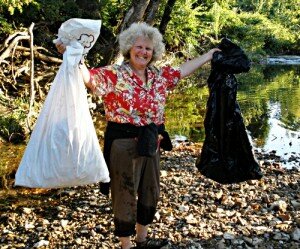 obably is not your thing. Instead of choosing the newest trend in service, choose your project based on your interests. There is an activity for everyone and every passion.
obably is not your thing. Instead of choosing the newest trend in service, choose your project based on your interests. There is an activity for everyone and every passion.
- Quit being self obsessed: Volunteering allows you to be selfless and take yourself out of the daily stresses of normal life. You are able to try something that you have never had the time to do in the past. While you should choose an activity that you enjoy, you should also choose the activity for the right reasons. Get a group of friends together and help out a cause today!
- Be mindful of your decision: Choosing an activity that you are passionate about will promote growth from your experience. For example, if you are interested in helping your community’s education you should choose a project such as tutoring. Seeing the effects of your service such as your student passing a test, may make you want to serve in bigger projects or devote more of your time. You will grow from the experience because you are devoting yourself to something you truly care about. You are selflessly pursuing your passions.
-
Understand your limits: Reward yourself for the great work you participated in. Go grab a bite to eat with the people who you volunteered with or go home and take a bubble bath. Just do something that will not only be enjoyable but will be a relaxing reward for you. You will be more likely to complete an activity and fit it into your routine if you can reward yourself after. After all, who doesn’t like coming home and relaxing after a hard day’s work?

- Recruit some friends: Tell your friends about your resolution and ask them if they would like to participate as well. You are more likely to go serve in person if you have people with you who share in your interests and support your efforts. Who knows they may even want to make service their resolution this year?
Do these tips work? See for yourself, make service your New Years resolution. Service not only will benefit your community, but it will also benefit yourself! This year make a resolution that you can actually keep! Pledge to serve today.
Related articles


 carpentry, become more social, or practice a new language? You can do all these things through volunteering! Volunteering is the perfect way to discover something that you’re really good at while contributing to the benefit of your community (it’s a win-win situation).
carpentry, become more social, or practice a new language? You can do all these things through volunteering! Volunteering is the perfect way to discover something that you’re really good at while contributing to the benefit of your community (it’s a win-win situation).
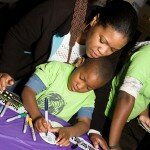
 Neighboring had the promise to build community and to strengthen families yet not much was known about it except through anecdotal evidence. HandsOn Network did a study of neighboring programs and found that the benefits reached beyond the programs.
Neighboring had the promise to build community and to strengthen families yet not much was known about it except through anecdotal evidence. HandsOn Network did a study of neighboring programs and found that the benefits reached beyond the programs. Neighboring creates role models for children. Children see caring and kindness modeled when neighbors provide service. More importantly, when volunteers are people that children realate to, the notion of “helping ourselves” becomes more possible, imbuing self-reliance.
Neighboring creates role models for children. Children see caring and kindness modeled when neighbors provide service. More importantly, when volunteers are people that children realate to, the notion of “helping ourselves” becomes more possible, imbuing self-reliance. Neighbors help neighbors.
Neighbors help neighbors. Neighboring is a place-based way of volunteering that builds on the talents and resources of local residents to strengthen families and elevate struggling communities into flourishing, vibrant places to live. It is about the connections among residents that support positive individual and community behavior based on mutual respect, responsibility, and ownership.
Neighboring is a place-based way of volunteering that builds on the talents and resources of local residents to strengthen families and elevate struggling communities into flourishing, vibrant places to live. It is about the connections among residents that support positive individual and community behavior based on mutual respect, responsibility, and ownership.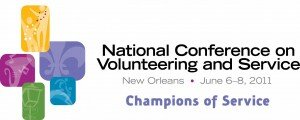 This year’s
This year’s 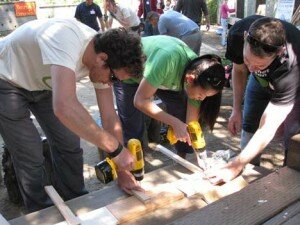 Looking at the impact of volunteers highlights the individual, institutional, and community change that volunteers can bring about through their service. Sessions in the impact track focus on specific solutions that volunteers can bring to
Looking at the impact of volunteers highlights the individual, institutional, and community change that volunteers can bring about through their service. Sessions in the impact track focus on specific solutions that volunteers can bring to 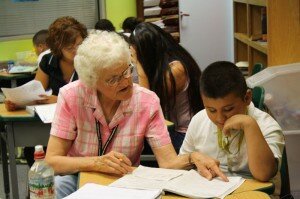 Boomers and
Boomers and  After the logistics of the event are worked out, the clean up day comes and everyone comes together at the park. As they work together, they achieve their goal (a clean park) and the group members gain a shared status of people working together to make their neighborhood better. After a few more projects, members of the group bring in their friends and the group grows in size.
After the logistics of the event are worked out, the clean up day comes and everyone comes together at the park. As they work together, they achieve their goal (a clean park) and the group members gain a shared status of people working together to make their neighborhood better. After a few more projects, members of the group bring in their friends and the group grows in size.
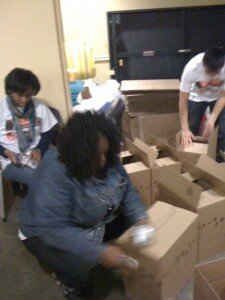 Follow the Leader focuses on people fulfilling their commitments from Tag and doing the work. So far, I like what I’m seeing! Every day, I get emails updating me about the previous day’s activities on the site, and it is very encouraging to see new members not only registering on the site, but making unique commitments and telling the community about the causes they care about. Each of them are addressing needs specific to their location and are applying the Project Playbooks to meet those needs.
Follow the Leader focuses on people fulfilling their commitments from Tag and doing the work. So far, I like what I’m seeing! Every day, I get emails updating me about the previous day’s activities on the site, and it is very encouraging to see new members not only registering on the site, but making unique commitments and telling the community about the causes they care about. Each of them are addressing needs specific to their location and are applying the Project Playbooks to meet those needs.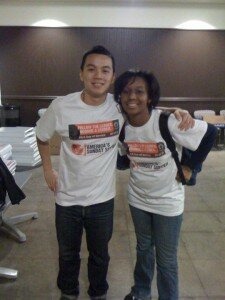 Here’s my invitation for you to be a part of our community! Check out Get HandsOn and sign up to take part in Follow the Leader. Download a Playbook, recruit members of your community, and be ready to make a difference. You never know who is looking up to your acts of service and will model your behavior. Caring about the community around us benefits everyone involved and the rewards from it will stretch far beyond your immediate surroundings.
Here’s my invitation for you to be a part of our community! Check out Get HandsOn and sign up to take part in Follow the Leader. Download a Playbook, recruit members of your community, and be ready to make a difference. You never know who is looking up to your acts of service and will model your behavior. Caring about the community around us benefits everyone involved and the rewards from it will stretch far beyond your immediate surroundings.


 32. Be a good listener.
32. Be a good listener.

